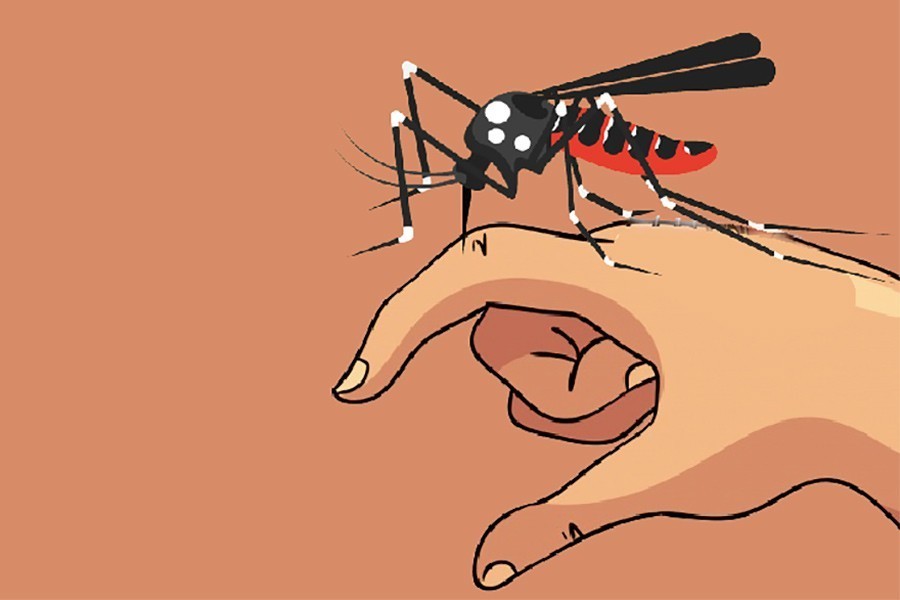Dengue may morph into all-year disease as new patients land in hospitals

Published :
Updated :

The outbreak of dengue fever that started in the middle of the year continues with new patients being admitted to hospitals in parts of Bangladesh.
The disease may become a new normal, occurring more or less throughout the year, as the mosquito which bears dengue virus has spread to almost all parts of the country this year.
To exterminate the dengue-carrying Aedes aegypti mosquitoes, experts have advised the government not to neglect anti-mosquito programmes.
The hospitals across Bangladesh admitted a total of 100,923 dengue patients so far this year, according to the Directorate General of Health Services.
The government has confirmed reports of 133 deaths from dengue this year. The dengue-related numbers have shattered all records this year. In 2002, as many as 6,232 were affected by dengue.
The prevalence of dengue was high from 2000 to 2006 when a total of 15,125 people were admitted to the hospitals and 233 died.
The prevalence of the disease slightly decreased in the period between 2007 and 2014, during which the total number of people affected by dengue was 6,656 and the death toll was nine, bdnews24.com reports.
The disease started to rise again in 2015 when 22,139 people were diagnosed with dengue and 54 died from the disease.
“The prevalence of dengue has increased steadily over the past few years. As the mosquitoes with dengue virus have spread throughout the country, the virus has also spread,” said Kabirul Bashar, a zoology professor at Jahangirnagar University.
Rainfall, humidity and temperature have acted as catalysts to help the mosquitoes breed, according to Kabir.
“It happened not only in Bangladesh but also in the neighbouring countries. Dengue may occur almost round the year from now,” he said.
Measures, such as mosquito repelling and awareness programmes, have lost momentum after the outbreak eased. “But these efforts must continue,” Kabir said.
Dengue is now “endemic” in Bangladesh, according to Meerjady Sabrina Flora, director of the Institute of Epidemiology, Disease Control and Research (IEDCR).“It may become a burden unless effective measures are taken to control mosquitoes outside Dhaka.”
"We’ve repeatedly said that Aedes albopictus is spreading outside Dhaka. The nature of albopictus is different from that of Aedes aegypti. Natural containers are its breeding grounds. It will be difficult for us to control Aedes albopictus until the repellent activities are not seriously taken.”
The local government can play a key role in preventing dengue across the country, according to Flora.
In late July this year, the city corporations in the outbreak’s epicentre, Dhaka, launched a ‘combing operation’ and many other programmes to destroy Aedes mosquitoes and its breeding grounds amid a massive dengue outbreak in the country.
As part of the programmes, the Dhaka North City Corporation conducted mobile courts and fined some owners of buildings for presence of Aedes mosquito larvae in their sites.
The anti-mosquito programme regained momentum recently after it slowed down for some time, said Mominur Rahman Mamun, the DNCC’s chief health officer.
"We put emphasis on controlling the Culex mosquitoes. Qulex has been brought under control as far as it is required. Now, we’re prioritising dengue. In each ward, eight staff members are working on controlling mosquitoes and destroying breeding grounds.”


 For all latest news, follow The Financial Express Google News channel.
For all latest news, follow The Financial Express Google News channel.